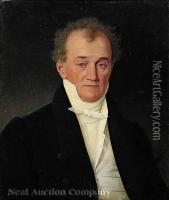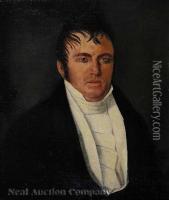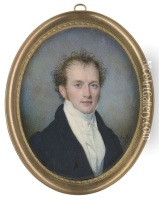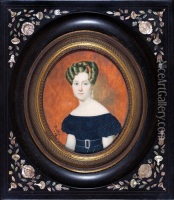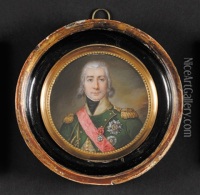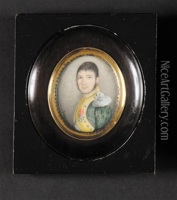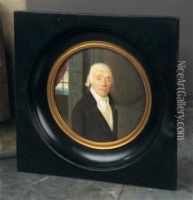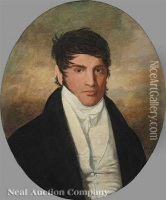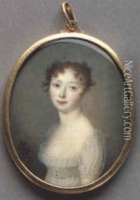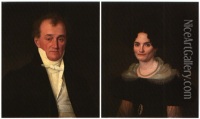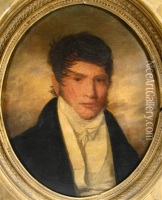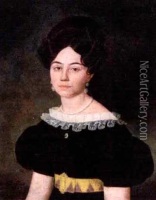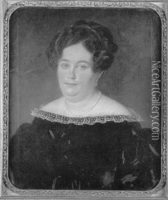Louis Antoine Collas Paintings
Louis Antoine Collas was a French-born artist whose work spanned the late 18th and early 19th centuries, a period marked by significant social and political upheaval in France and the broader European context. Born in Bordeaux in 1775, Collas developed an early interest in the arts, which was nurtured by the vibrant cultural scene in France during this era. Despite the tumultuous period marked by the French Revolution and the Napoleonic Wars, Collas managed to cultivate a career that would see him achieve recognition beyond the borders of his native country.
Initially trained in France, Collas's artistic pursuits led him to explore various genres, but he is most notably recognized for his mastery in miniature painting and engraving. His skills in these mediums were not only a testament to his personal talent but also indicative of the period's artistic trends, where such forms of art were highly popular among the European elite. Miniature painting, in particular, was a favored medium for personal portraiture, capturing the intricate details and subtleties of the subject's visage in a manner that larger canvases often could not replicate.
Collas's reputation as a miniaturist and engraver eventually attracted the attention of patrons beyond France, prompting him to travel extensively throughout Europe and later to the United States. His journey to America in the early 19th century was reflective of a broader trend among European artists seeking new opportunities and audiences. In the United States, Collas continued to work and thrive, contributing to the burgeoning art scene in his adopted country. His American period was marked by a series of notable commissions and exhibitions, further solidifying his reputation as a skilled miniaturist.
Throughout his career, Louis Antoine Collas remained dedicated to his craft, adapting to changing tastes and the evolving art market. His works, characterized by their precision and attention to detail, have been appreciated by art collectors and historians alike, offering a glimpse into the aesthetic preferences of his time. Collas passed away in 1856, leaving behind a legacy that not only highlights his individual talent but also provides insight into the broader artistic movements of the late 18th and early 19th centuries. His contributions to the art world continue to be studied and admired, ensuring his place in the annals of art history.
